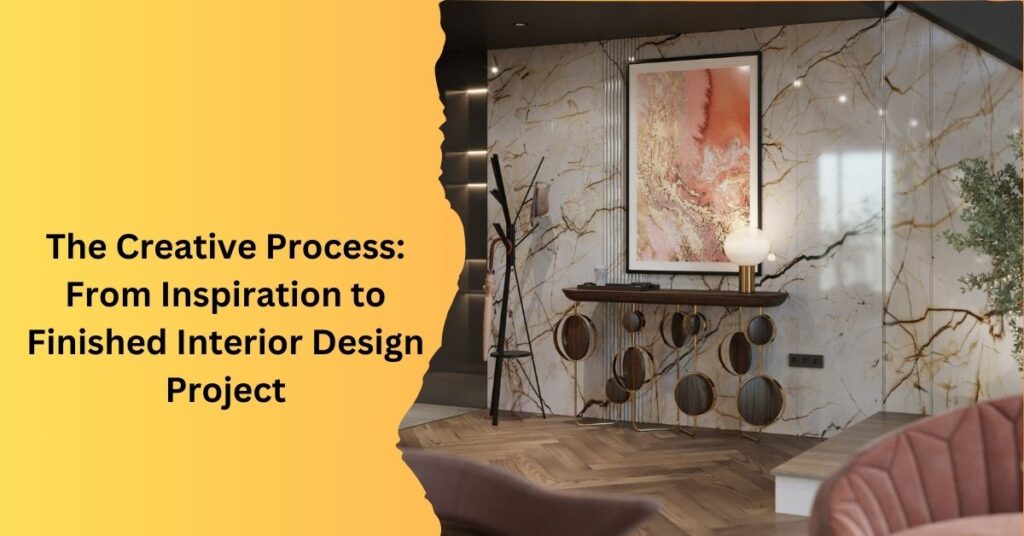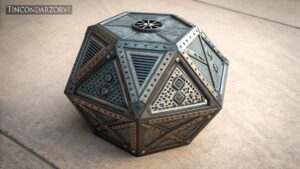The Creative Process: From Inspiration to Finished Interior Design Project

The domain of interior design is a captivating blend of artistry and functionality. From transforming empty spaces into stunning, livable environments to crafting unique, personalized atmospheres, interior designers have the remarkable ability to bring dreams to life.
This article will delve into the fascinating creative journey of an interior designer, exploring the stages from initial inspiration to the completion of a breathtaking project. Additionally, it will touch on how aspiring designers can refine their creative process through a formal interior design course.
Finding Inspiration
The creative process for interior designers typically begins with a spark of inspiration. This can come from anywhere – a beautiful sunset, a piece of art, a memorable vacation, or even a client’s personality and preferences. It’s all about capturing that initial idea and allowing it to evolve into a design concept.
Concept Development
Once the inspiration has been identified, interior designers embark on the journey of concept development. This is the stage where they start to piece together the elements that will define the project. From color palettes and materials to furniture arrangements and lighting concepts, every detail is carefully considered to ensure the vision aligns with the client’s needs and desires.
Planning and Research
Behind every stunning interior design project lies meticulous planning and research. Designers need to be well-versed in the latest trends, materials, and technologies. They also need to take into account the practical aspects of the space, such as layout, dimensions, and budget constraints. This phase requires a keen eye for detail and a deep understanding of the client’s lifestyle and functional requirements.
Visualization and Rendering
With a solid plan in place, interior designers use advanced tools and software to create visual representations of their ideas. This step allows clients to see what the finished project will look like before any work begins. It’s a crucial part of the creative process as it helps clients better understand the design and make any necessary adjustments.
Material Selection
Selecting the right materials is a pivotal aspect of interior design. Designers must consider not only aesthetics but also durability, sustainability, and budget. They source materials like fabrics, flooring, and finishes that align with the design concept and the client’s preferences.
Execution and Project Management
Once the design has been approved, it’s time to turn vision into reality. Interior designers work closely with contractors, artisans, and craftsmen to ensure that every detail is executed flawlessly. Effective project management is essential to keep everything on track and within budget.
Styling and Accessorizing
The finishing touches make all the difference. Interior designers carefully select furnishings, decor, and accessories that complement the design concept. These elements add personality and character to the space, creating a welcoming and harmonious environment.
Final Inspection and Client Approval
Before declaring a project complete, interior designers conduct a final inspection to ensure that everything meets the highest standards of quality and design. Once they are satisfied with the outcome, they invite the client for a walkthrough. Client approval is the ultimate validation of their creative vision.
Post-Project Evaluation
Even after a project is finished, the creative process continues. Interior designers reflect on the project’s successes and areas for improvement. This self-evaluation helps them refine their skills and stay at the forefront of their field.
Refining the Creative Process Through Formal Courses
Aspiring interior designers can benefit immensely from formal interior design courses. These programs offer structured education that covers everything from design principles and space planning to material selection and project management. Here are some ways in which students can refine their creative process through these courses:
Learning Design Fundamentals
Formal courses provide a strong foundation in design fundamentals, helping students understand the principles of aesthetics, color theory, and spatial design. This knowledge forms the basis for their creative endeavors.
Exploring Different Styles and Trends
An interior design course can expose students to a wide range of design styles and trends. This exposure allows them to expand their creative horizons and develop a versatile design sensibility.
Mastering Technical Skills
Interior designers need technical skills such as drafting, 3D modeling, and rendering. Formal courses offer hands-on training in these areas, ensuring that students are well-equipped to bring their creative visions to life.
Gaining Industry Insights
Through guest lectures, internships, and industry partnerships, students can gain valuable insights into the real-world challenges and opportunities in the field of interior design. This practical knowledge is essential for refining their creative process.
Networking and Collaboration
These courses provide students with opportunities to connect with professionals in the industry. Collaborating with peers and mentors allows them to learn from experienced designers and gain fresh perspectives on their creative work.
The Bottom Line
In conclusion, the creative journey of an interior designer is a captivating process that begins with inspiration and ends with a stunning, functional living space. It involves a series of carefully planned and executed steps, from concept development to project completion.
Aspiring designers can enhance their creative process by enrolling in formal courses, where they can learn the fundamentals, explore different styles, master technical skills, gain industry insights, and build a network of collaborators. With dedication and a passion for design, anyone can embark on a rewarding career in interior design and create beautiful, inspiring spaces for clients to enjoy.








